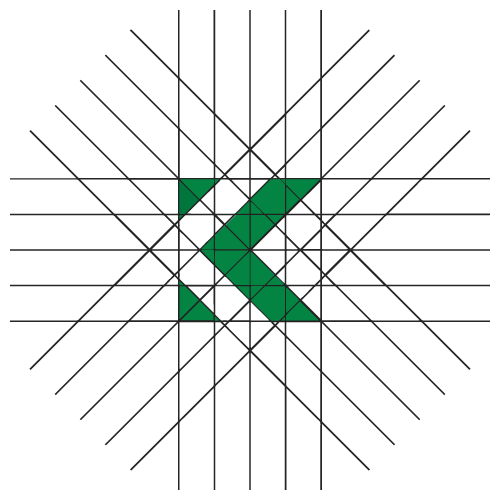Vision Correction Surgeries (LASIK/Lenticule Extraction/Surface Ablation/ICL)
LASIK
LASIK, if you are suitable, is a procedure developed over 30 years for vision correction. As a specialist LASIK eye surgeon in London Miss. Khanam aims to deliver the best care and vision possible. Miss. Khanam uses state-of-the-art facilities and technology and is committed to delivering the highest possible quality care.
Miss. Khanam began her career as a refractive surgeon studying with renowned surgeons including Mr. John Bolger, Mr. Sheraz Daya, Mr. Dan Reinstein and Mr. Julian Stevens, and continues to collaborate with them. Together with world-renowned colleagues, she has remained at the forefront of development and research. Her number one priority has always remained her patients.
What is LASIK Surgery?
LASIK stands for Laser-Assisted in Situ Keratomileusis. Miss. Khanam performs no-touch microsurgery using excimer or femtosecond ultra-short pulse lasers to reshape the cornea, creating precise vision. This reduces or eliminates the need for glasses or contact lenses. Miss Khanam is then able to correct most common forms of vision impairment, known as myopia (near-sightedness), hyperopia (far-sightedness) and astigmatism.
During LASIK eye surgery, a separation plane is created by applying a tiny layer of bubbles in the cornea, so separating a very thin layer of tissue, which is reflected back, exposing the area to be treated under the surface. This is then precisely sculpted using a 193 nm short wavelength excimer laser, and then the reflected layer is gently, carefully and precisely placed back into position, where it heals quickly. The key is to be highly choreographed and efficient to avoid drying and Miss. Khanam normally performs this in 4-5 minutes per eye. Initial healing at the surface afterwards takes only 3 to 4 hours and is painless, with normal blinking afterwards. Most people return to work the next day, even those who work outdoors or in dusty environments.
Frequently asked questions about LASIK Surgery
Is LASIK safe?
LASIK has a very strong safety profile. Worldwide there have been over 8,000 trials and publications assessing the safety and efficacy of LASIK. It is estimated that over 30 to 35 million people had LASIK. It is often quoted that an actuarial risk analysis reveals that though the risks differ, the risks are similar for LASIK as for soft contact lens wear. All procedures carry risk and side effects. The main side effect of modern LASIK is dry eye, which for many people is mild, transient or self-limiting, but can persist. This is why prior to treatment the tear film is assessed. For those who have pre-existing dry eye, LASIK would not be advisable. The alternative is to consider a phakic lens, the ICL. Alternatively, in the young where there are very elastic corneas or where the cornea is naturally thin, then surface excimer laser treatment is an alternative.
What vision conditions does LASIK correct?
In general LASIK can treat near-sightedness (myopia), a smaller degree of far-sightedness (hyperopia) and astigmatism.
Is LASIK Eye Surgery right for you?
This is a very common question, and it is very individual, not just to the person but also to each individual eye. Normally it is for adults over 18 years of age, though those who are 18 to mid-20s commonly have surface excimer laser treatment for long-term stability. There needs to be healthy corneas and stable vision for the past couple of years.
Miss Khanam will advise if LASIK is suitable and will benefit you with a thorough eye examination together with detailed scans and imaging. Miss Khanam will provide you with detailed information after your evaluation and assessment. She will educate you about the potential risks and benefits of the LASIK procedure.
How many patients achieve 20/20 or 6/6 vision or better after LASIK?
According to published literature and Miss Khanam’s experience, and depending upon the group being assessed, 96%-98% of patients achieve 20/20 or 6/6 or better vision after a single laser procedure. LASIK can be considered like golf. It is commonly possible to perform a further laser application to refine or enhance the result if required. As a rough guide, the probability of needing this is about 0.5% per dioptre of treatment attempted, so for a -4 D treatment this is 2% and for -2 D it is 1%.
How long will my LASIK last?
Long term studies over 30 years reveal the procedure is a long-term correction with remarkable stability, given how much the rest of the body changes during this time. It is possible that the eye can continue to grow, especially for higher myopes more than -6D, who can progress through life. The rest of the eye ages as normal with reading glasses defining middle age. Cataract is said to define old age, as we all develop cataract if we live long enough.
Can LASIK get rid of my reading glasses?
Our ability to read without glasses declines with age and eventually begins to be lost in our 40s. or early 50s, termed presbyopia. There are refractive surgery options to correct this, including micro-monovision or blended vision. Monovision is the term we give to a visual outcome where one eye (your dominant) is set for distance and your other eye (non- dominant) for near vision. This can be preformed by LASIK. This procedure may be known as blended laser vision or Presbyond™. Detailed assessment in the clinic is required to determine suitability. Other procedures, such allotex are in the horizon to address correction of presbyopia.
What to expect during a LASIK consultation
Detailed scans are first performed to measure the curvature and thickness of the cornea of the eye as well as other parameters. A refractive assessment of the vision in each eye as well as how the eyes work together is also completed. Then Miss. Khanam will examine your eyes in detail and advise about vision correction options, which may include conservative management with glasses or contact lenses or refractive treatment options by laser, or sometime lens implantation. Then you will be able to make the best and most informed decision regarding your vision.
Advanced technologies employed include corneal topography, OCT and wavefront imaging. This can map the eye with more than 1000 different points with great precision.
Your Eyes. Your Treatment. Your LASIK.
The most advanced LASIK procedure is customised and planned entirely for each individual eye. Your eyes are unique and individual to you.
The combination of wavefront diagnostic mapping of the eyes and Iris Registration technologies enables precision placement of an excimer laser to sculpt the cornea to the exact shape desired.
Part One- customised measurements
Part Two- Laser-created flaps
Part Three- Wavefront- guided vision correction
LASIK with Miss. Khanam means precise vision correction
Schedule a Consultation
LASEK/PRK/Advanced Surface Ablation Treatment
LASEK stands for “laser assisted epithelial keratectomy” and PRK stands for “photo refractive keratotomy”. You may also hear LASEK or PRK being referred to as ASA (Advanced Surface Ablation).
Both LASEK and PRK are techniques for sculpting your cornea directly without creation of a LASIK flap. The top (epithelial) layer is removed, and the excimer laser is applied. The surface cells then grow back over the following 2 to 3 days and then mature over some days and weeks.
What is the difference between LASIK and PRK?
Both LASIK and PRK/LASEK are performed using the same excimer laser and achieve the same visual results. LASIK employs a second laser (femtosecond laser) to create a flap on the surface of the cornea, which is reflected back after your cornea is sculpted for your best vision. There is no flap required with PRK/LASEK, as the excimer laser sculpting is performed directly to the surface of the corneal stroma. After the surface treatment is completed, a special contact lens is placed on the eye for 5-6 days to allow the epithelium to heal and significantly mature. Surface excimer laser treatment is preferred for those with thinner corneas, those who play contact sports and those who seek the least invasive method of treatment.
Lenticule Extraction Refractive Surgery (SMILE/SILK)
SMILE, SILK and other lenticule extraction procedures are all based on removing a lens shaped sliver from the centre of the cornea. It uses a femtosecond laser and no excimer laser. It is suitable for near sightedness or myopia treatment and astigmatism or blurry vision. It is an alternative to LASIK but it is not wavefront guided at the present time.
ICL
ICL stands for implantable collamer lens, though many people call it the intraocular contact lens. It is an excellent option for those with moderate to severe near-sightedness and has 8 become very popular. It is the preferred option for many refractive surgeons for myopia greater than -6.0 to -8.0 D. The ICL provides painless and rapid vision correction, is removable and, also, critically does not create or worsen dry eye, so is preferred to LASIK where there is pre-existing dry eye.
The ICL is a small, highly biocompatible contact lens that is placed behind the iris in front of the natural human lens. Nothing is removed. The procedure is efficient, takes just a few minutes and reduces or eliminates the need for glasses or contact lenses.




